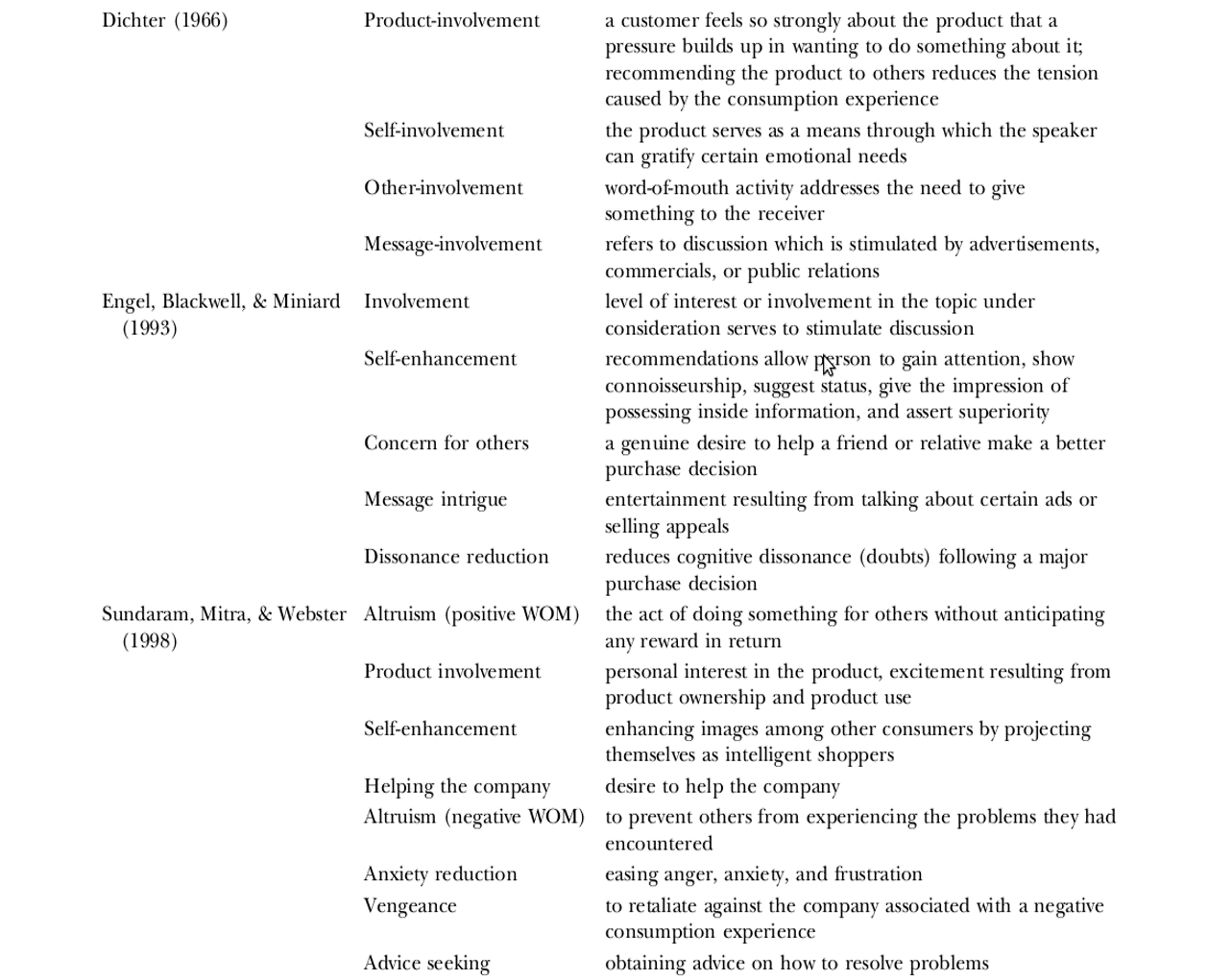“If you have an unhappy customer on the Internet, he doesn’t tell his 6 friends, he tells his 6,000 friends”
Jeff Bezos, President of Amazon.com
Marketers can spend millions of pounds on marketing campaigns, yet a simple and cost- free recommendation from a trusted source can be the consumer’s final decision maker. WOM can prompt a consumer to consider a brand or product in a way that incremental advertising spending simply cannot. WOM makes up for 20-50% of all purchasing decisions, especially when consumers are purchasing a product for the first time or when they are fairly costly. The balance of power between companies and consumers has dramatically altered as consumers have become overloaded and increasingly sceptical about traditional company-driven advertising and marketing. Measuring and managing WOM is far from simple. However, it can be broken down to understand it more.
Online WOM Definition
Using consumer communication as a means of multiplying a brand’s popularity through customers spreading the brand name of a product or name of a company
Hennig-Thurau et al., 2004
The rise of online communities and communication have revolutionised its influence to a point where WOM is not simply a one to one communication, but available to a much wider audience. The right messages can resonate and expand within interested networks, affecting brand perceptions, purchase rates, and market share.
Any positive or negative statement made by potential, actual, or former customers about a product or company, which is made available to a multitude of people and institutions
Stauss, 2000
It has enabled consumers to voice their opinions and personal experiences in writing or videos, accessible at any time from the comfort of the consumer’s own home.
eWOM Channels
Companies can shape their eWOM management strategies more effectively by using appropriate channels to focus their efforts on based on consumer’s preferences.
- Consumer channels include; social media, product reviews, blogs, forums, message boards etc.
- Seller channels include; social media, websites, comparison websites, embedded social media etc.
The primary channel for sellers is their website, where they have clear control of the content including embedded social media as a way of increasing consumer interaction.
eWOM Motivation – Why do we post what we do?
Consumers are likely to select eWOM channels that support their motives.
Kreis, Henning; Gottschalk, Sabrina A. October 2015
eWOM motivators are factors that motivate consumers to actively voice their opinions. Factors include; economic incentives, self-enhancement, social benefits, self-promotion, concern for others etc. Concern for others can be broken down into people advising others not to make a bad decision on purchasing a certain product if they had a bad experience with it.
Hennig-Thurau et al., 2004 produced one of the leading Articles on What motivates consumers to articulate themselves?, see page 41 for example below.

McWilliam, 2000 found identification and social integration to be the most important factors. People feel rewarded when they interact with groups where their opinion matters. Take the recent terrorist attack in Paris, France for example, where people changed their profile picture on Facebook to the French flag to support France – people want to be part of something socially, and be seen to be doing something positive or good.
Effectiveness
Studies going back to the 1950s have shown that WOM has become more effective than traditional online marketing.
Bickart and Schindler, 2001 found that consumers feel that the person making the recommendation can relate to themselves; the author is a fellow consumer. And so, the author has more relevance, empathy and higher credibility than marketers do.
The factors consumers consider when searching for product information are;
- Trustworthiness; Senecal and Nantel, 2004 found that consumers are less critical of the information source and did not differentiate much between online experts and recommendations when choosing what digital camera to buy. It could be argued that people have become more sophisticated in using online sources since 2004.
- Expertise; as above. Hovland, Janis, & Kelly, 1953 held it was the “level of validity perceived by the recipient”.
- Attractiveness; Bickart and Schindler, 2001 found that this is based on the fellow consumer. See social commerce, for example the amount of Facebook likes.
Examples
The effects of blogger recommendations on customers’ online shopping intentions.
Hsu, C. L., Lin, J. C. C., & Chiang, H. S. (2013)
What Makes Online Content Viral
Initiating a buzz or trend that captures a new product or brand can potentially go viral through creating the most engaging and impacting statements and posts.
“Viral marketing is a strategy by which a marketer creates a campaign focused around the goal of causing viewers of that promotion to spontaneously spread it by sending it to friends.”
Zarrella, D. (2014) The Social Media Scientist
Hopefully, this has given you a brief overview of the different ways that eWOM can be broken down and looked at in more detail.



